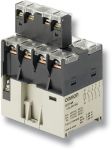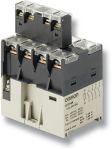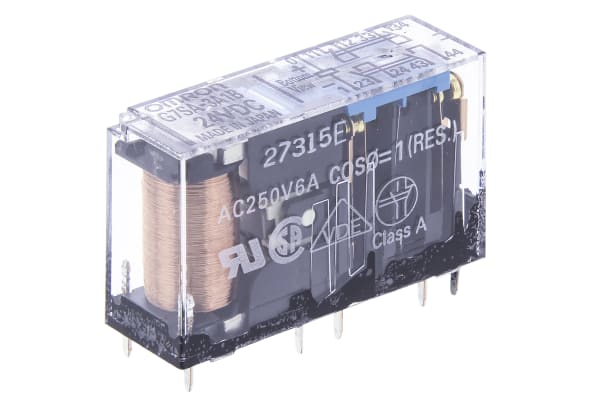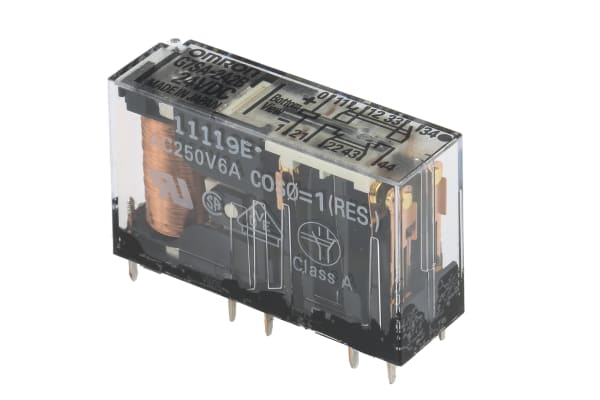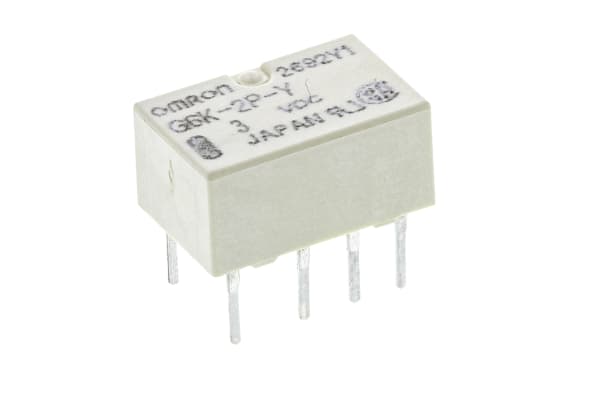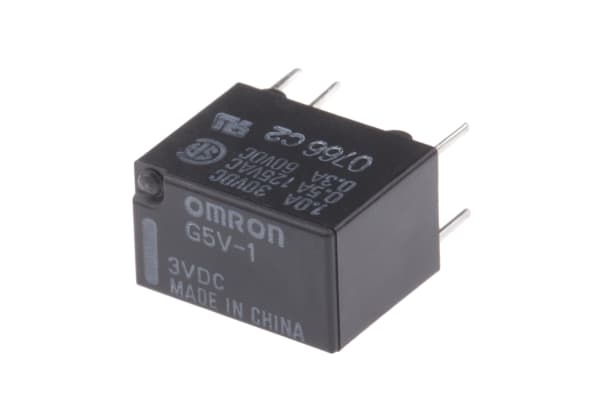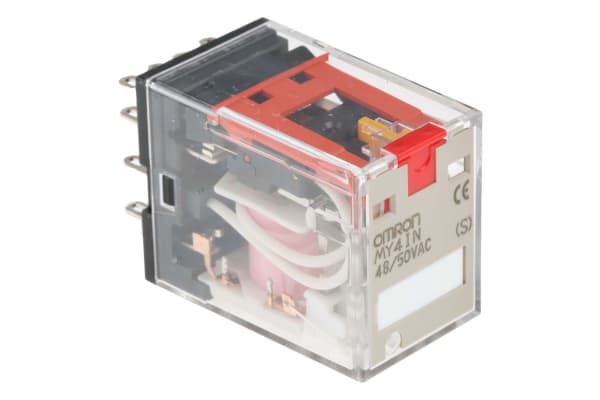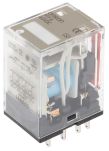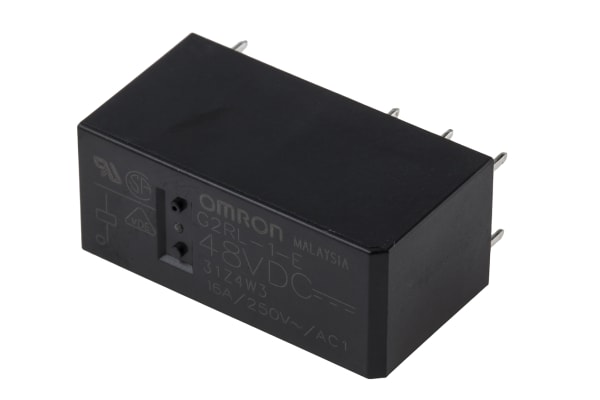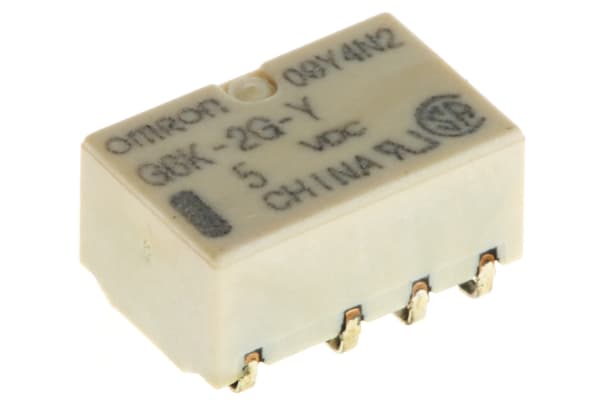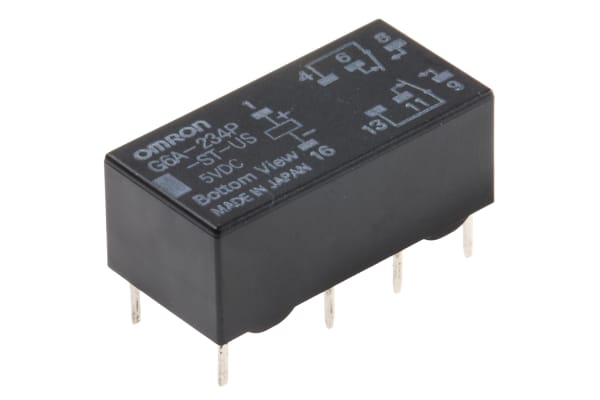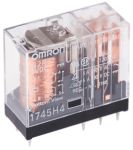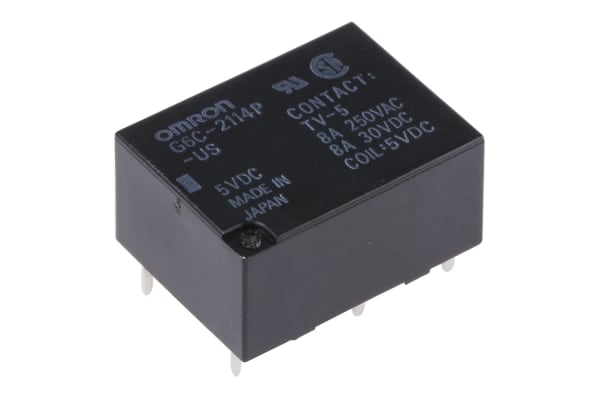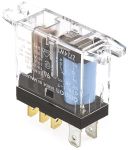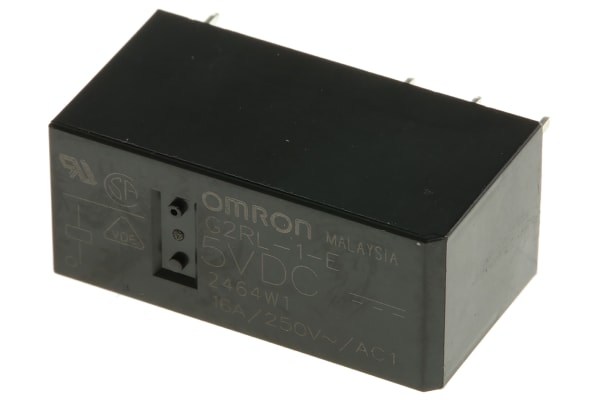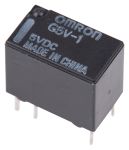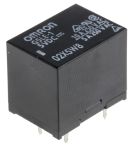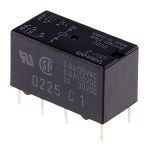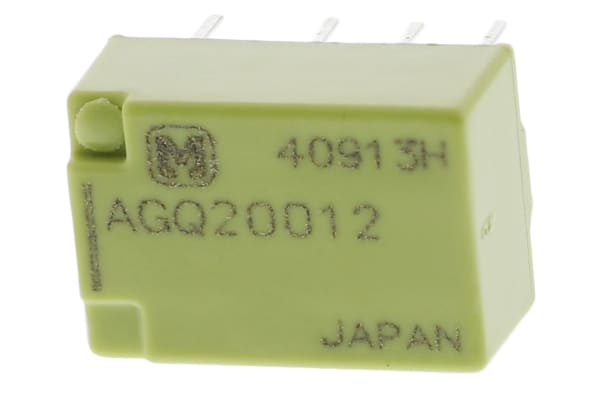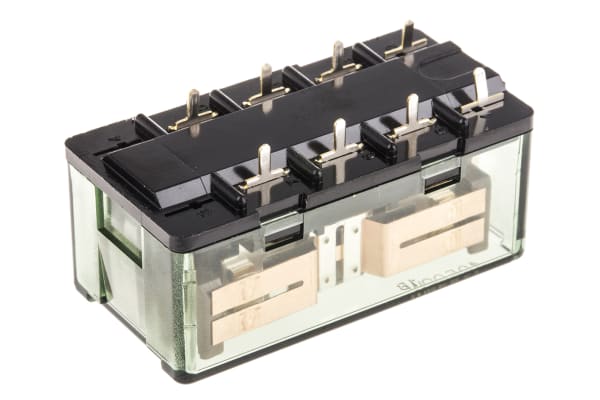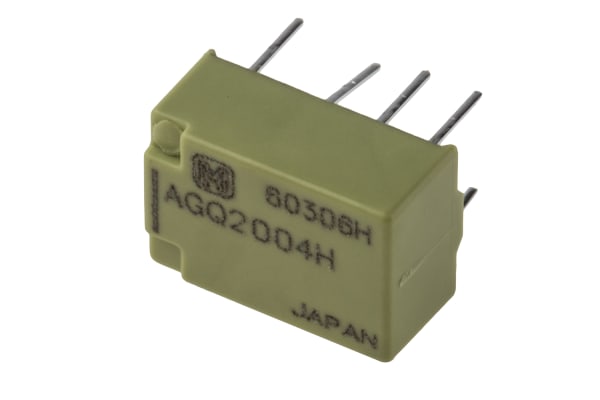Non-Latching Relays
Relays are electrical switches that are operated by electrical impulses with the primary function to open and close a circuit, they can also be referred to as industrial switches. There are 2 main types available, latching and non–latching relays.How do non-latching relays work?Non-latching relays are in a normally closed (NC) position and will stay in this state without power. When power passes through the circuit, the relay switched to a normally open (NO) position by using an internal coil to generate a magnetic force, holding this NO position. Once the current is turned off, it returns to the NC position. This makes non-latching relays well suited to push-button applications like keyboards and micro-controller input buttons.What are non-latching relays used for?Non-latching relays are highly durable and versatile components, making their performance long lasting and suitable for use in a wide range of applications, such as:Automotive enginesHousehold appliancesIndustrial machineryMedical equipmentTelecommunications equipmentWhat is the difference between latching and non-latching relays?Both types of relays in similar in design and function, however, a significant difference between them is that a latching relay will remain in the last position it when it was last powered, whereas a non-latching goes back to its normal position. This makes each more type of relay suitable for different applications. Considerations when selecting a relayWhen choosing a relay, it is important to consider a number of specifications to ensure it is fit for purpose, some factors include:Coil voltage – the required voltage to actuate the switching mechanism. If a voltage is too high this could damage the components, if it is too low then it will not actuate. Contact configuration – This is the state the contacts are in without power. For example SPST, single pole single throw.Contact material – the relay contacts are available in many materials that have certain properties. Common materials are gold, silver, tin oxide and nickel Coil power – the amount of power (watts) the coil operates at. This must match the power in the circuit for correct function. Coil resistance – the amount of resistance (ohms) in the circuit that the coil creates.
-
Omron, 24V dc Coil Non-Latching Relay, 25 (NC A @ AC), 40 (NO A @ AC), 5 (DC) A Switching Current Chassis Mount, 3
IDR1,092,429.35 -
Omron, 24V dc Coil Non-Latching Relay, 40 (AC) A, 5 (DC) A Switching Current Chassis Mount, 4 Pole, G7Z-4A-20Z-R 24VDC
IDR1,195,431.33 -
Omron, 24V dc Coil Safety Relay 3PNO, SPNC, 6A Switching Current PCB Mount, 3 Pole, G7SA-3A1B 24DC
IDR642,346.36 -
Omron, 24V dc Coil Safety Relay DPDT, 6A Switching Current PCB Mount, 2 Pole, G7SA-2A2B 24DC
IDR605,739.75 -
Omron, 3V dc Coil Non-Latching Relay DPDT, 1A Switching Current PCB Mount, 2 Pole, G6K2PY3DC
IDR57,479.72 -
Omron, 3V dc Coil Non-Latching Relay SPDT, 2A Switching Current PCB Mount Single Pole, G5V-1 3DC
IDR222,157.02Pack (1 Pack of 5) -
Omron, 3V dc Coil Non-Latching Relay SPDT, 3A Switching Current PCB Mount Single Pole, G6E134PSTUSDC3
IDR58,004.17 -
Omron, 48V ac Coil Non-Latching Relay 4PDT, 5A Switching Current Plug In, 4 Pole, MY4INAC4850S
IDR206,738.19 -
Omron, 48V dc Coil Non-Latching Relay 4PDT, 5A Switching Current Plug In, 4 Pole, MY4 DC48(S)
IDR179,257.01 -
Omron, 48V dc Coil Non-Latching Relay SPDT, 16A Switching Current PCB Mount Single Pole, G2RL-1-E 48DC
IDR60,521.53 -
Omron, 5V dc Coil Non-Latching Relay DPDT, 1A Switching Current PCB Mount, 2 Pole, G6K-2G-Y 5DC
IDR70,066.52 -
-38.80%
Omron, 5V dc Coil Non-Latching Relay DPDT, 2A Switching Current PCB Mount, 2 Pole, G6A-234P-ST-US 5DC
IDR67,339.38IDR55,906.37 -
Omron, 5V dc Coil Non-Latching Relay DPDT, 5A Switching Current PCB Mount, 2 Pole, G2R-2 5DC
IDR92,932.54 -
Omron, 5V dc Coil Non-Latching Relay DPST, 8A Switching Current PCB Mount, 2 Pole, G6C-2114P-US 5DC
IDR105,624.23 -
Omron, 5V dc Coil Non-Latching Relay SPDT, 10A Switching Current Panel Mount Single Pole, G2R1T5DC
IDR103,001.98 -
Omron, 5V dc Coil Non-Latching Relay SPDT, 10A Switching Current PCB Mount Single Pole, G2R-1 5DC
IDR68,702.95 -
Omron, 5V dc Coil Non-Latching Relay SPDT, 16A Switching Current PCB Mount Single Pole, G2RL-1-E 5DC
IDR41,641.33 -
Omron, 5V dc Coil Non-Latching Relay SPDT, 1A Switching Current PCB Mount Single Pole, G5V-1-DC5
IDR38,914.19 -
Omron, 5V dc Coil Non-Latching Relay SPDT, 8A Switching Current PCB Mount Single Pole, G5LE-1-DC5
IDR20,663.33 -
Omron, 9V dc Coil Non-Latching Relay DPDT, 2A Switching Current PCB Mount, 2 Pole, G5V-2 9DC
IDR279,846.52Pack (1 Pack of 5) -
Panasonic DPDT Non-Latching Relay PCB Mount, 12V dc Coil
IDR38,284.85 -
Panasonic DPDT Non-Latching Relay PCB Mount, 12V dc Coil, 15 A
IDR409,595.45 -
Panasonic DPDT Non-Latching Relay PCB Mount, 24V dc Coil, 15 A
IDR387,673.44 -
Panasonic DPDT Non-Latching Relay PCB Mount, 4.5V dc Coil
IDR38,284.85



